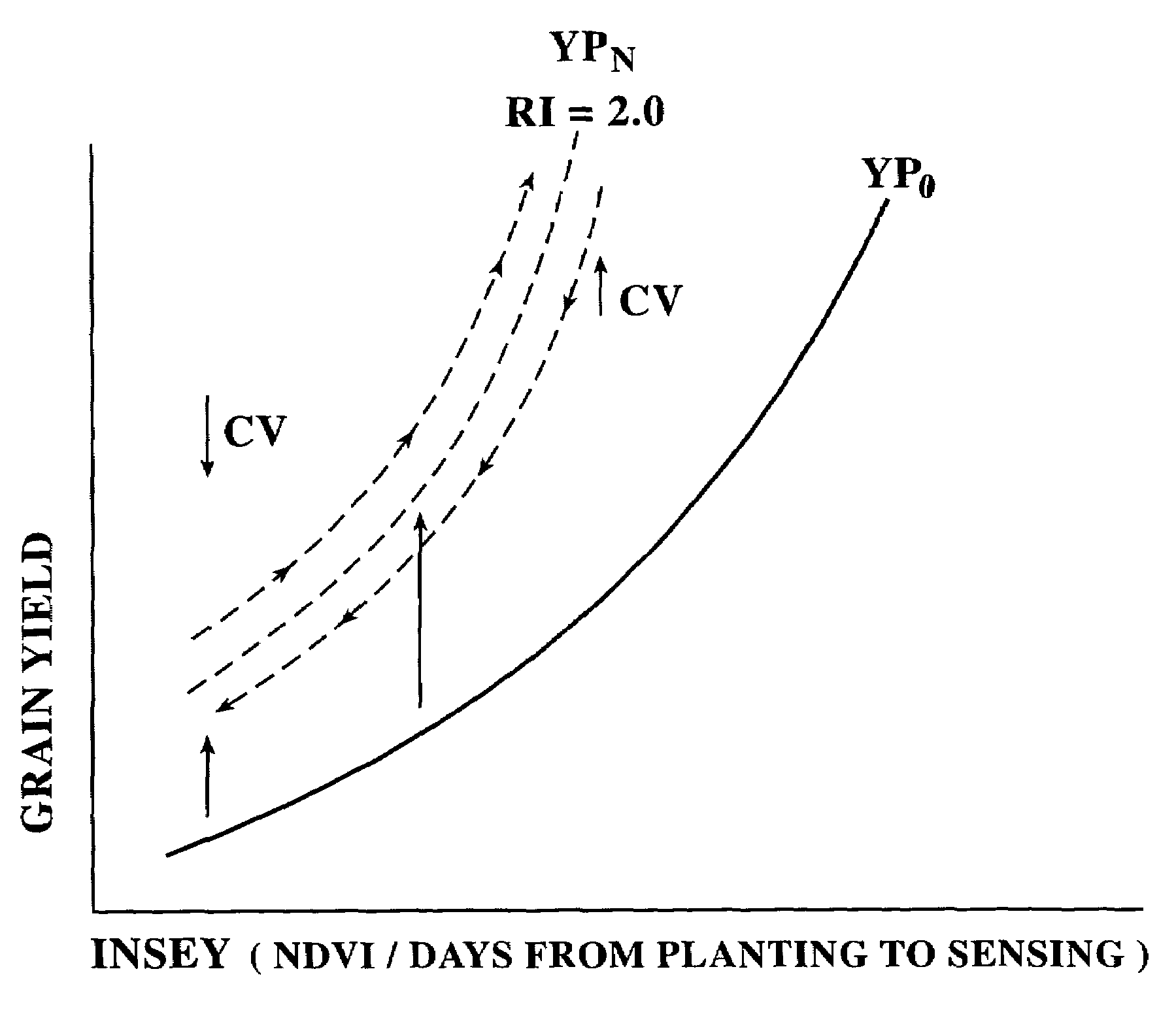Use of within-field-element-size CV for improved nutrient fertilization in crop production
a technology of within-field elements and fertilizers, applied in the field of method for determining the rate of fertilizer application, can solve problems such as poor plant conditions
- Summary
- Abstract
- Description
- Claims
- Application Information
AI Technical Summary
Benefits of technology
Problems solved by technology
Method used
Image
Examples
Embodiment Construction
[0032]Before explaining the present invention in detail, it is important to understand that the invention is not limited in its application to the details of the construction illustrated and the steps described herein. The invention is capable of other embodiments and of being practiced or carried out in a variety of ways. It is to be understood that the phraseology and terminology employed herein is for the purpose of description and not of limitation.
[0033]As will become apparent to those skilled in the art from the discussion hereinbelow, practice of the present invention potentially increases crop yield while reducing the total amount of nutrients, such as nitrogen, added to a crop. While the inventive method is applicable to virtually any crop, for purposes of example, and not by way of limitation, the description of the preferred embodiments is directed to production of winter wheat. In practice, preferably side-by-side reference strips are planted along with the crop. A first...
PUM
 Login to View More
Login to View More Abstract
Description
Claims
Application Information
 Login to View More
Login to View More - R&D
- Intellectual Property
- Life Sciences
- Materials
- Tech Scout
- Unparalleled Data Quality
- Higher Quality Content
- 60% Fewer Hallucinations
Browse by: Latest US Patents, China's latest patents, Technical Efficacy Thesaurus, Application Domain, Technology Topic, Popular Technical Reports.
© 2025 PatSnap. All rights reserved.Legal|Privacy policy|Modern Slavery Act Transparency Statement|Sitemap|About US| Contact US: help@patsnap.com



